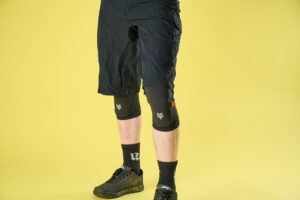The steel and alloy Cotic RocketMax offers zen-like composure and balance on rough stuff
Cotic RocketMax 150 Gold XT review
Cotic is probably best known for its hardcore steel hardtails, originally the Soul and more recently the BFe. And what started out in the Peak District over 20 years ago as a relatively small direct sales operation to scratch owner/founder, Cy Turner’s itch, Cotic has grown in size but has always remained true to its roots. As the brand has evolved, so has the range of bikes it offers, the latest and most accomplished being the Gen 4 RocketMax, a full-suspension enduro bike that blends a custom 853 Reynolds tubeset with alloy chainstays.
Need to know:
- Mechanics will love the external cable routing on the front triangle, but pretty it isn’t
- All UK make Cotic frames come with Datatag fitted at the factory
- Choose your shock and corresponding frame travel at checkout: 150mm, 155mm or 160mm
- Steel triangle for feel, alloy chainstay for power delivery. It’s a great combination.
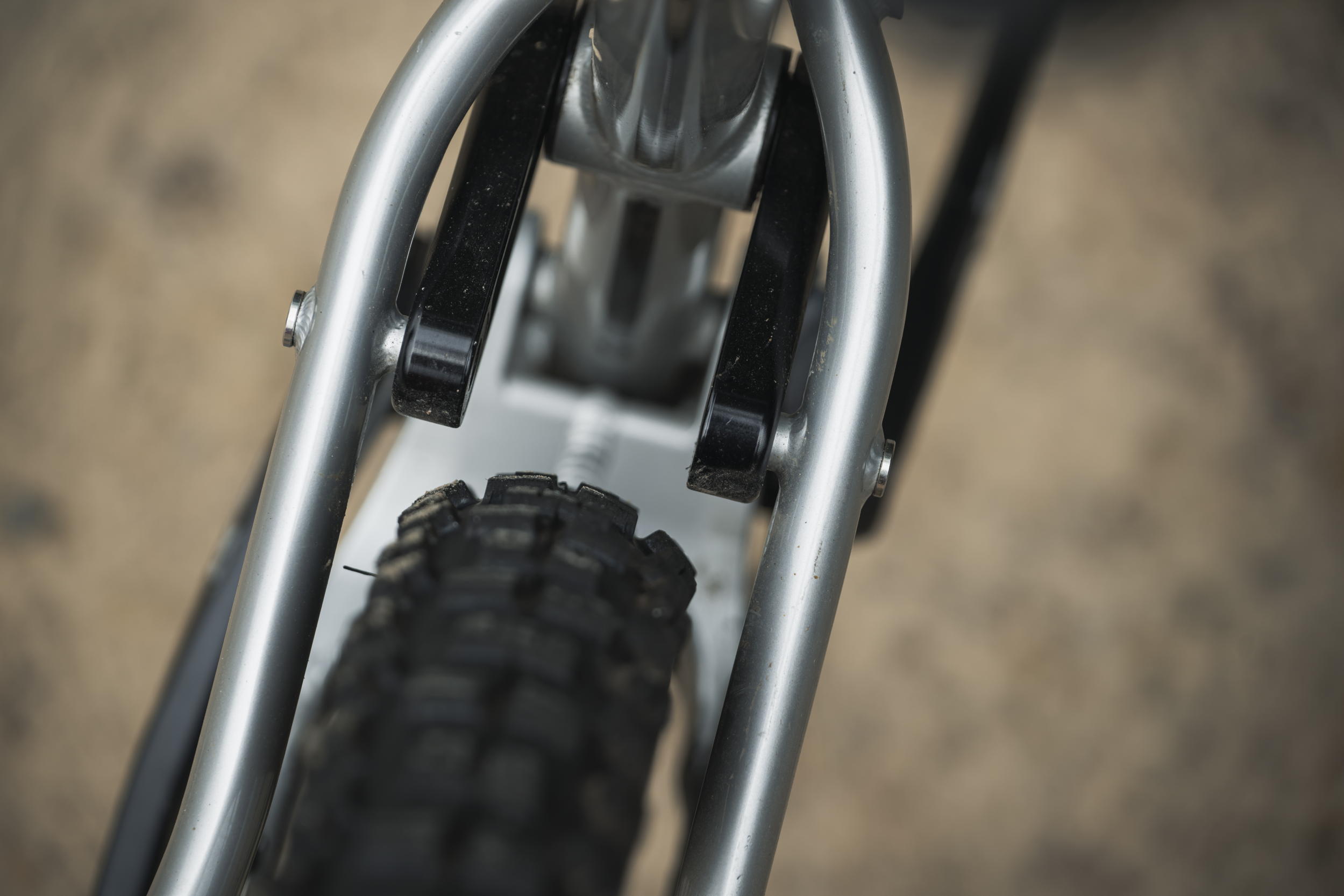
Frame
The steel tubing for the front triangle is designed in Sheffield and immaculately welded in Scotland by Five Land Bikes. The top tube is ovalised and tapers neatly to merge seamlessly with the seat tube. Being a steel front triangle, there’s no shortage of reinforcing gussets around the head tube, while a small tube straddles the downtube and seat tube to shore up the bottom bracket area. As a result, the Cotic definitely looks more industrial, especially some of the pivot hardware, when sat next to the Hope or Orange.
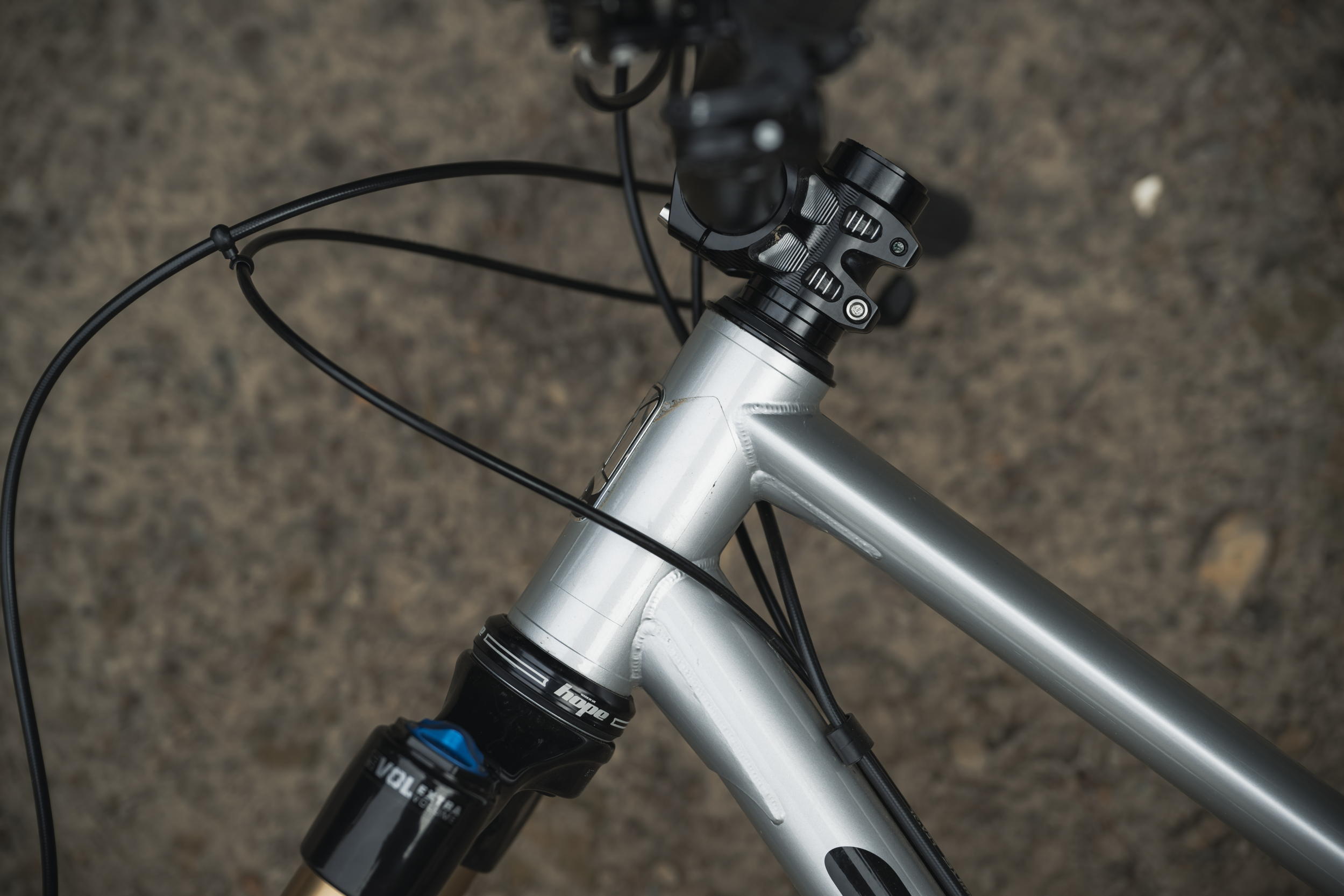
Bringing the manufacturing of the front triangle home, has enabled Cotic to increase the number of sizes it offers to five, C1 to C5, which equates to S to XXL. The length on the Gen 4 RocketMax has also increased, our size C3 test bike sporting a generous 488mm reach, making it the longest frame in test. An added bonus of the fifth size being that the jumps between each size are now tighter, so you’re much less likely to be stuck on either side of the sizing recommendations.
Cotic’s Longshot geometry means the bike has been designed to handle optimally with a 35mm stem. And the increased reach isn’t simply about keeping up with the Joneses. Cotic also steepened the seat tube angles on the three biggest frame sizes, and it didn’t want to eat into the top tube lengths, so the reach had to increase.
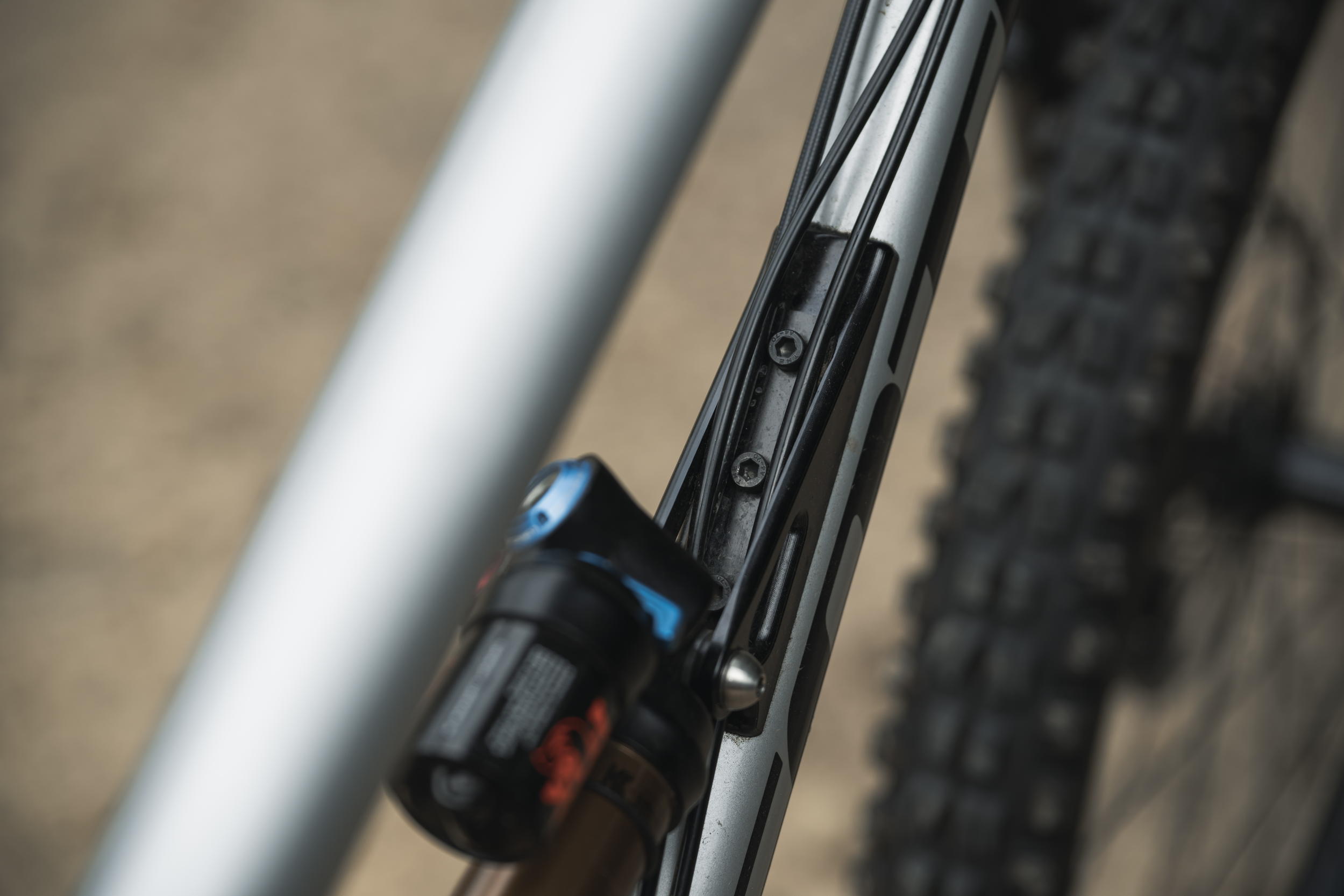
In terms of manufacturing the RocketMax is very much a bike of two halves. Not that you could tell by looking at it.
The chunky alloy swingarm and slender steel seat stays are both produced in Asia. The two-piece seam welded alloy yoke that connects the main pivot to the chain stays provides the stiffness needed to ensure good pedalling efficiency and optimal tyre clearance. And given Cotic’s use of predominantly old world materials, the RocketMax is remarkably light: only 0.5kg heavier than the full carbon Hope HB916 and lighter than the aluminium Orange.

Suspension
Cotic’s DropLink suspension design is a single-pivot, where the shock is driven directly by an extension of the seat stays. In that respect the suspension layout is similar to a YT Jeffsy or Canyon Spectral, albeit without the Horst link pivot interrupting the chainstays.
In keeping with all of the customisation, Cotic offers the RocketMax in three travel configurations. Stock, it has 160mm travel. You can also order your bike with a 62.5mm stroke shock to make it a 155mm bike or a 60mm stroke shock to deliver 150mm. Our test bike came in the 150mm travel configuration and we measured vertical wheel travel at 149mm. So pretty much spot on.

Regardless of travel, the shocks all share the same eye to eye length and tune, so the fork travel, or more specifically the axle to crown height, determines the head angle, BB height, and to a lesser extent the reach. Our test bike came with a 160mm travel Fox 36 Factory fork, which gave it a 64.7º head angle, 76.6º effective seat angle and a 346mm BB height.
The frame has no facility for geometry adjustment, other than fitting an angleset, but the different travel options will change the dynamic geometry of the bike as the longer stroke shocks run a little more sag.
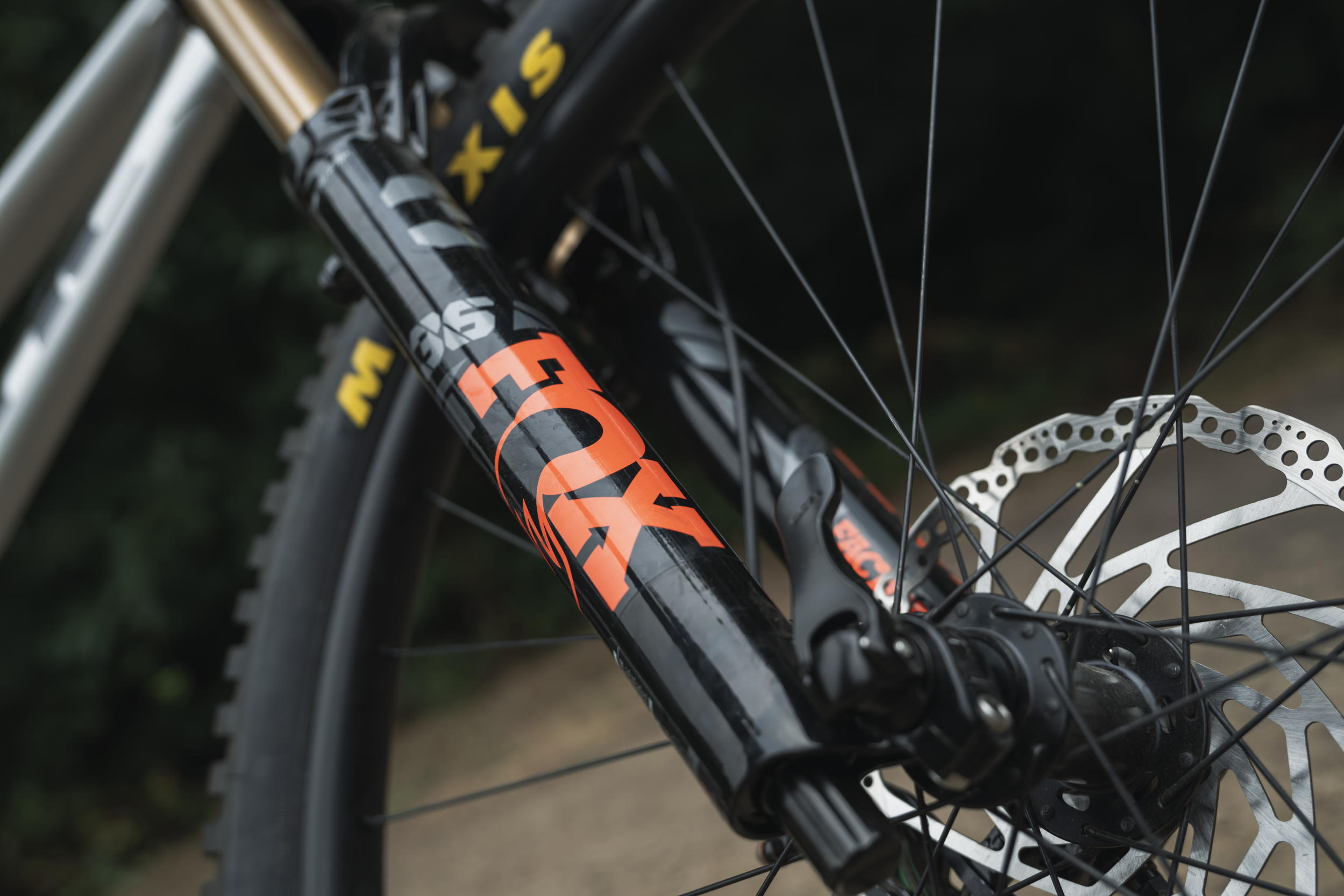
Fox one-ups the Ohlins equipped bikes in this test by offering 4-way adjustable damping rather than three. So in addition to low-speed rebound, and high and low speed compression, the Fox 36 fork and Float X2 shock also have high-speed rebound adjustment. Not that we needed the compression adjusters on the Float X2 shock, as we ran both wide open to breathe some life into the ride and the bike still pedalled like stink.
Rebound was more mid-range, but given how stable the 150mm rear suspension felt in every situation, we’d argue that the shorter travel option would benefit from a lighter compression tune, that way you could simply dial in your desired compression feel with the adjusters on the X2 shock.We also ran the shock slightly softer than recommended, just to help the bike sit into its travel more readily, and kill off some of the BB height and slacken out the head angle. And again we were impressed with how well it still pedalled.
Up front, the Fox 36 fork was noticeably more supple than the Ohlins units, especially on flatter trails where you’re not weighting the front end as much. Also, if you’re not a heavy rider, the Fox 36 is probably more than stiff enough to guide you safely through every situation, and will provide a more forgiving ride than the stiffer 38mm chassis forks. Guide pressures on the Fox 36 fork make getting a ballpark set up easy, and while there’s no recommendations for the compression damping, we tend to run two clicks of high speed and the low speed dial halfway in on the Grip2 damper to get the desired level of support.
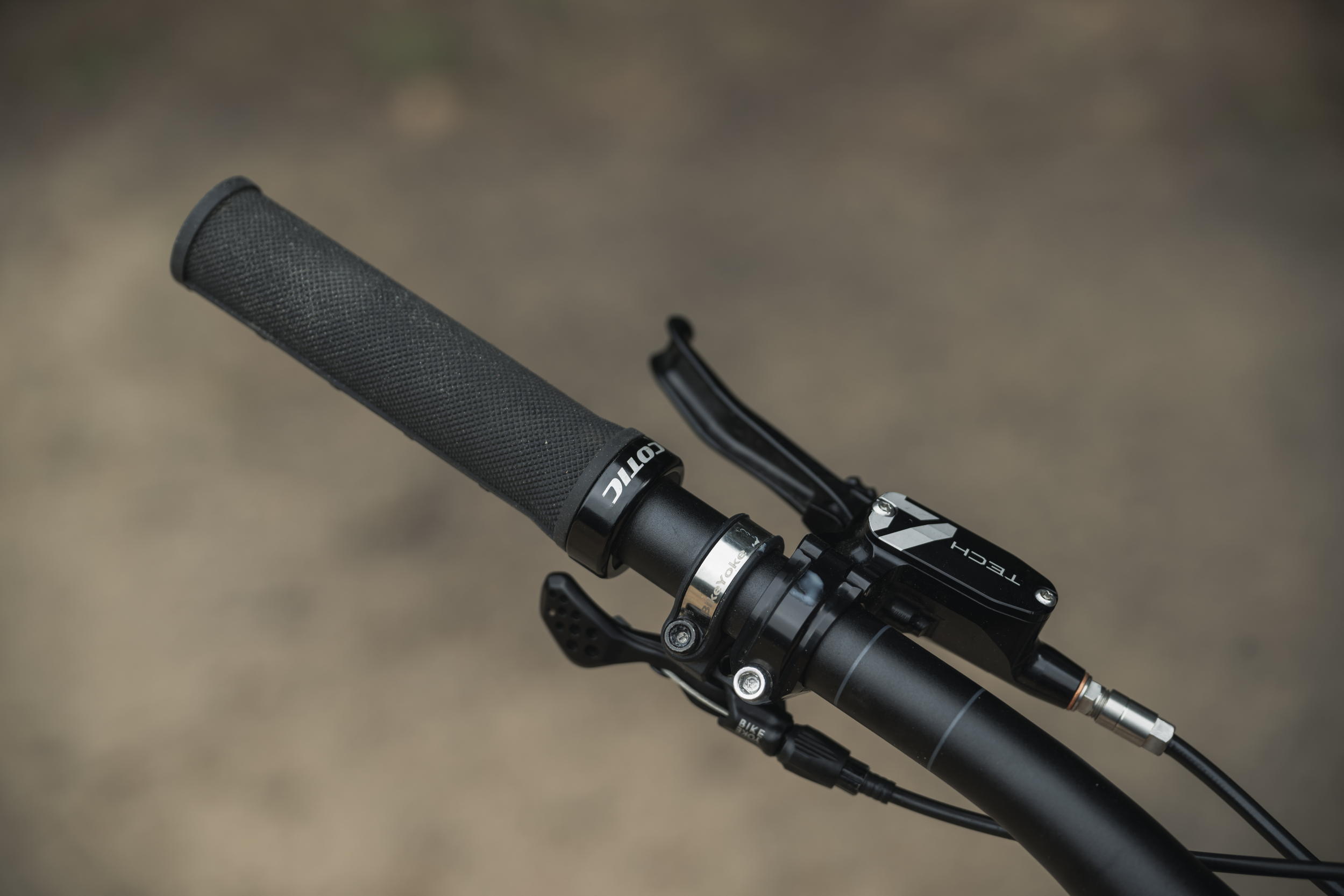
Components
If you take advantage of the custom spec options on Cotic’s “Your Bike Built For You programme”, we’d recommend upgrading the stock Cotic saddle and grips for something with more cushioning to really give the bike some all-day comfort.
We’d also recommend sticking with the Hope Tech 4 V4 brakes as they are simply amazing. They now have the power to match their excellent modulation and while not cheap, spare parts will always be available for these brakes. Which means they are by far the most environmentally friendly and economical brake option to run, long term. And while that’s always been true of Hope brakes, now that it has stellar performance to match its stellar customer service, we don’t want to run anything else.
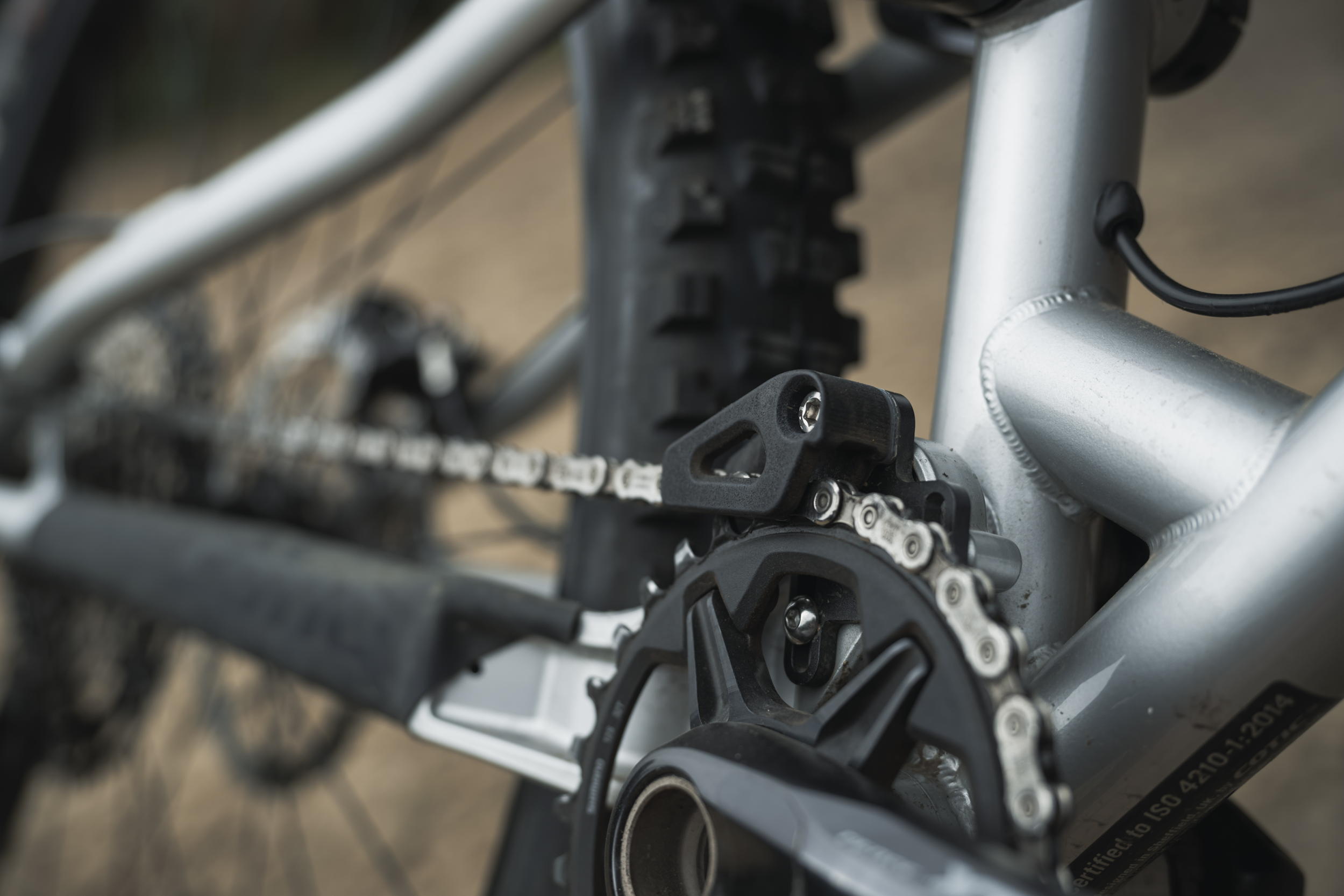
The Hunt Trail Wide V2 wheels are also great, the rear hub offering faster, smoother and quieter engagement than the Hope Pro 4 hubs on the HB916 and Switch 7. Our Maxxis control tyres snapped effortlessly into place on the Trail Wide rims with only a floor pump to hand. So going tubeless is super easy, even if it is a little tougher to break the beadlock on the Hunt rims when you do get a puncture.
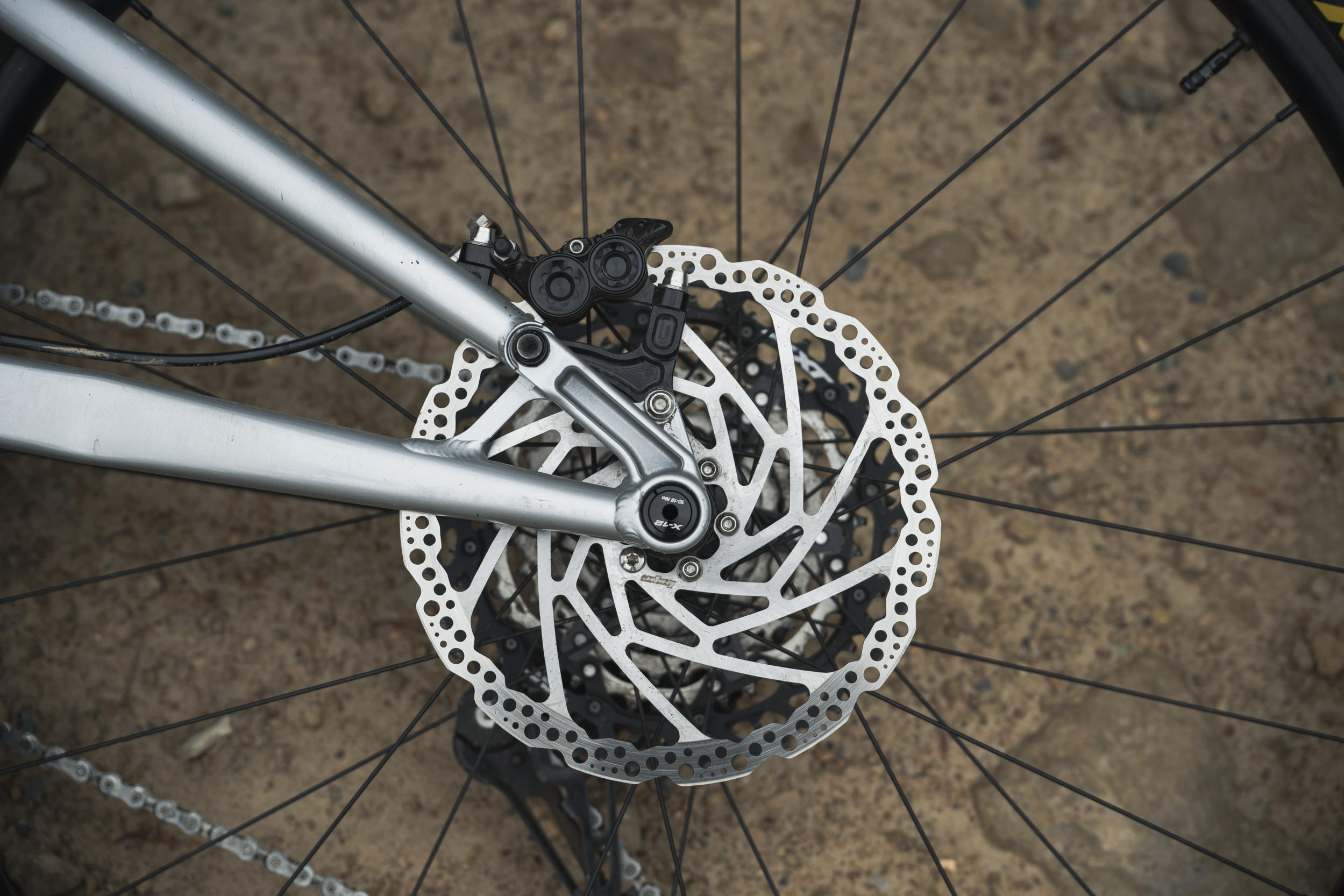
Yes, the Shimano XT chainset lacks bling factor, but the two-piece hollow forged design is still the best in the business. And because you can preload the bottom bracket bearings with the same level of precision as a headset, they will outlast most of their rivals too.
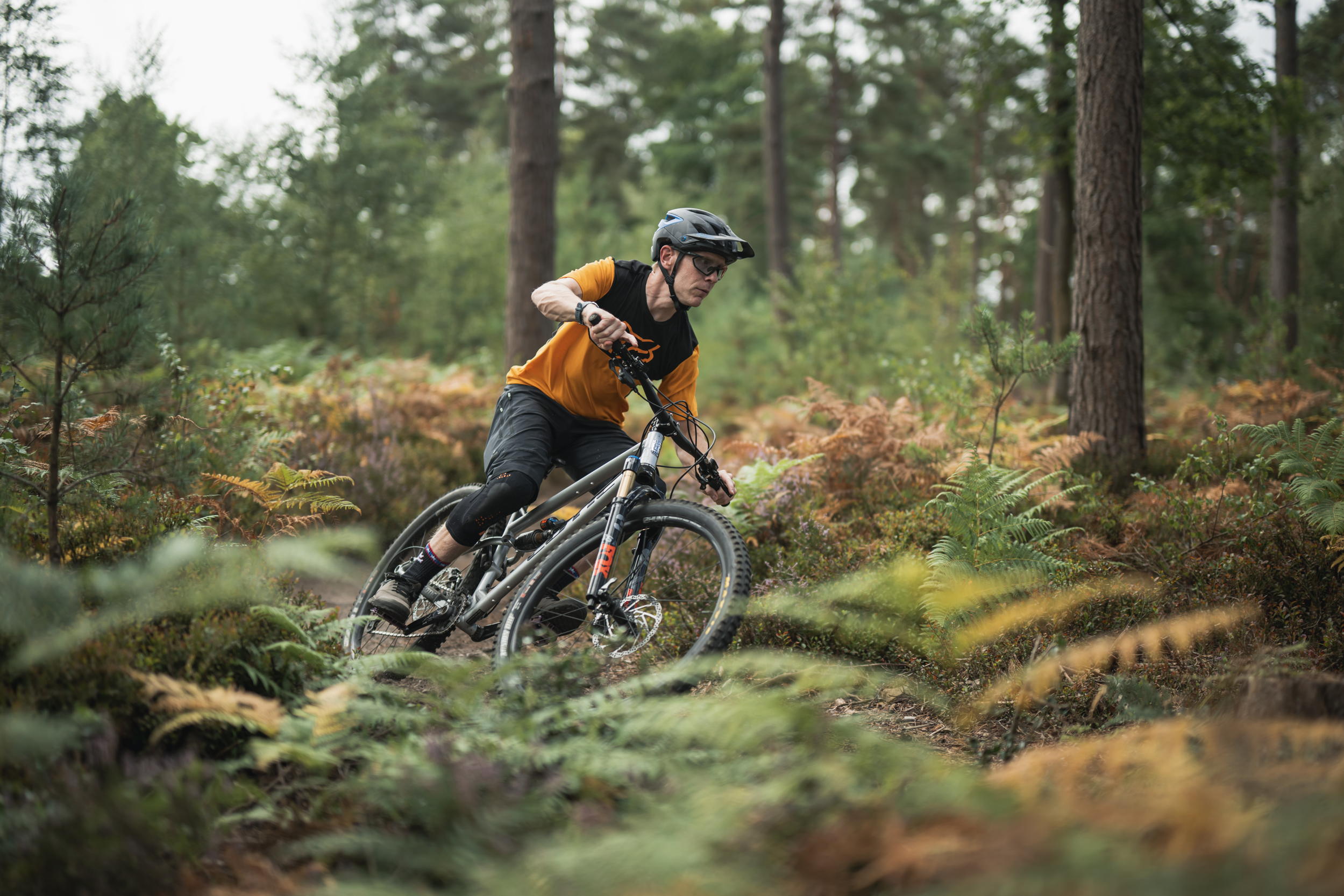
How it rides
With the Atherton AM.150 which we were also hoping to test at the same time stuck in customs, the 150mm trail version of the Cotic RocketMax seems a bit like the odd one out in this test. With its generous sizing and stable suspension however, it still managed to hold its own, and even excel on some trails.
Get the RocketMax cranked over in a long arcing turn, and it holds a remarkably precise line. It’s also very calm and collected on off-camber trails where you’d normally be struggling for traction. And it’s hard not to attribute this zen like poise to the unique blend of steel tubing and the alloy chainstay assembly.
Unfortunately, the chain slapping on the pivot hardware just above the rear dropout, breaks the serenity of the moment with alarming regularity.
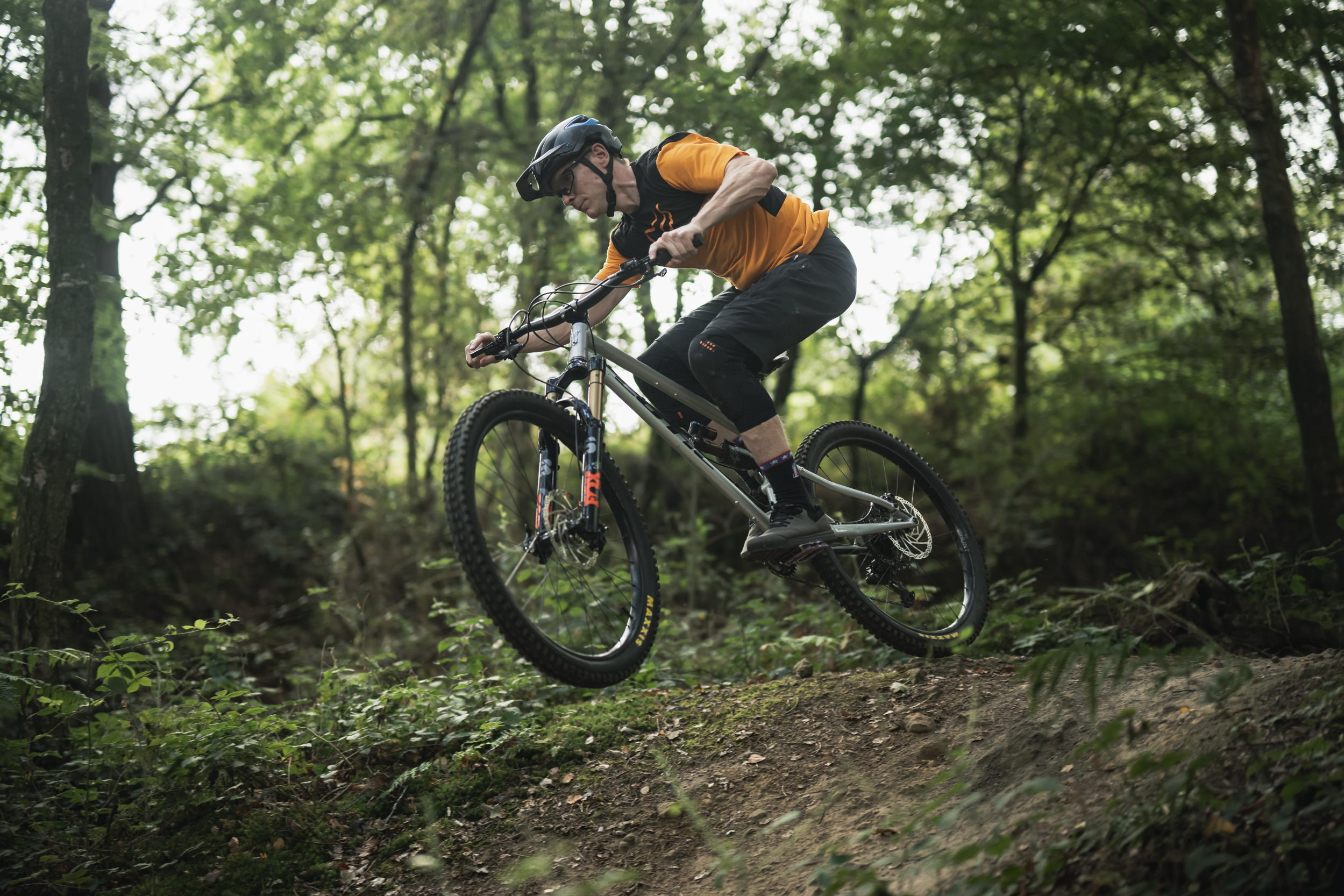
Front to back, the weight distribution of the Cotic is also very well balanced, and there’s tons of support in the rear suspension, so you feel very centre on the bike. Possibly too centred even, as the long 488mm reach and more static suspension response definitely makes it harder to muscle the bike around on tighter trails or take more creative lines than on the Hope HB916 or Orange Switch 7 SE, even though both have more travel.
Factor in the relatively high BB, and the riding position on the RocketMax reminded us of the Mondraker Foxy, in that you get the stability from the length, and the pedal clearance from the height. Great for winching up rocky bridleways.

The taller BB height isn’t so advantageous on more technical descents though. And while the rear suspension is unflappable, it’s inherent stability means you can’t pump the bike as easily as the Hope or Orange, which again makes it a slightly less playful and engaging ride.
On the plus side these traits make the Cotic the best pedalling bike in test, and the only bike here where the suspension doesn’t have a fit the minute you stand up to sprint. So as an effective, efficient trail bike the 150mm RocketMax has a lot going for it. Every time we took it out for a spin however, we couldn’t help but think that it would probably feel better in full enduro mode.
- Best enduro mountain bikes: 15- – 180mm monsters
- Best mountain bike lights: handlebar mounted, helmet and eBikes
- Seven performance metrics every mountain biker should strive towards
Verdict
With hindsight always being 20/20, we should have got the full blown 160mm travel RockeMax for this test. The longer shock stroke would have given the bike a lower dynamic BB height, while the 170mm fork would have slackend the head angle a touch. In 150mm mode the RocketMax still makes for a modern, versatile trail bike and with Cotic’s competitive pricing it could probably offer customers both suspension options and still be the cheapest bike in this test. And with inflation in double figures, that’s not something to be sniffed at.










